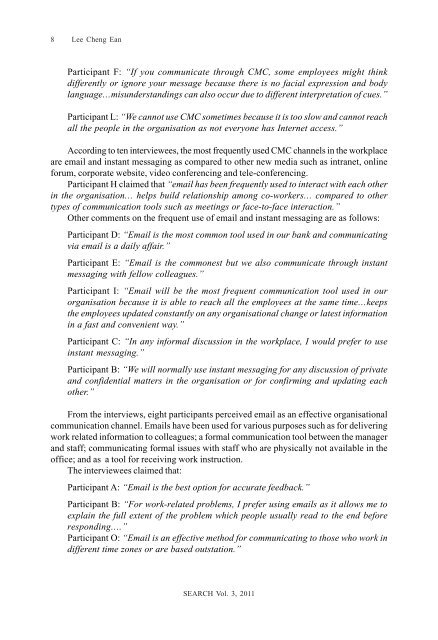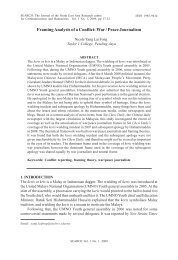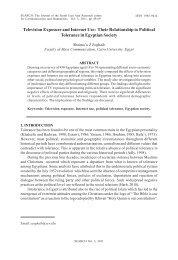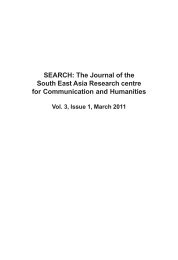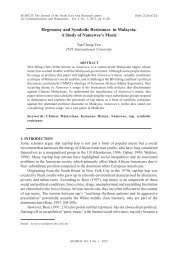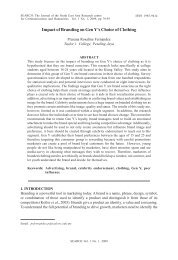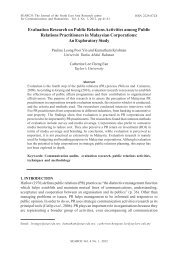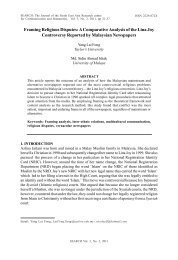Computer-Mediated Communication and Organisational ...
Computer-Mediated Communication and Organisational ...
Computer-Mediated Communication and Organisational ...
You also want an ePaper? Increase the reach of your titles
YUMPU automatically turns print PDFs into web optimized ePapers that Google loves.
8Lee Cheng EanParticipant F: “If you communicate through CMC, some employees might thinkdifferently or ignore your message because there is no facial expression <strong>and</strong> bodylanguage…misunderst<strong>and</strong>ings can also occur due to different interpretation of cues.”Participant L: “We cannot use CMC sometimes because it is too slow <strong>and</strong> cannot reachall the people in the organisation as not everyone has Internet access.”According to ten interviewees, the most frequently used CMC channels in the workplaceare email <strong>and</strong> instant messaging as compared to other new media such as intranet, onlineforum, corporate website, video conferencing <strong>and</strong> tele-conferencing.Participant H claimed that “email has been frequently used to interact with each otherin the organisation… helps build relationship among co-workers… compared to othertypes of communication tools such as meetings or face-to-face interaction.”Other comments on the frequent use of email <strong>and</strong> instant messaging are as follows:Participant D: “Email is the most common tool used in our bank <strong>and</strong> communicatingvia email is a daily affair.”Participant E: “Email is the commonest but we also communicate through instantmessaging with fellow colleagues.”Participant I: “Email will be the most frequent communication tool used in ourorganisation because it is able to reach all the employees at the same time…keepsthe employees updated constantly on any organisational change or latest informationin a fast <strong>and</strong> convenient way.”Participant C: “In any informal discussion in the workplace, I would prefer to useinstant messaging.”Participant B: “We will normally use instant messaging for any discussion of private<strong>and</strong> confidential matters in the organisation or for confirming <strong>and</strong> updating eachother.”From the interviews, eight participants perceived email as an effective organisationalcommunication channel. Emails have been used for various purposes such as for deliveringwork related information to colleagues; a formal communication tool between the manager<strong>and</strong> staff; communicating formal issues with staff who are physically not available in theoffice; <strong>and</strong> as a tool for receiving work instruction.The interviewees claimed that:Participant A: “Email is the best option for accurate feedback.”Participant B: “For work-related problems, I prefer using emails as it allows me toexplain the full extent of the problem which people usually read to the end beforeresponding….”Participant O: “Email is an effective method for communicating to those who work indifferent time zones or are based outstation.”SEARCH Vol. 3, 2011


